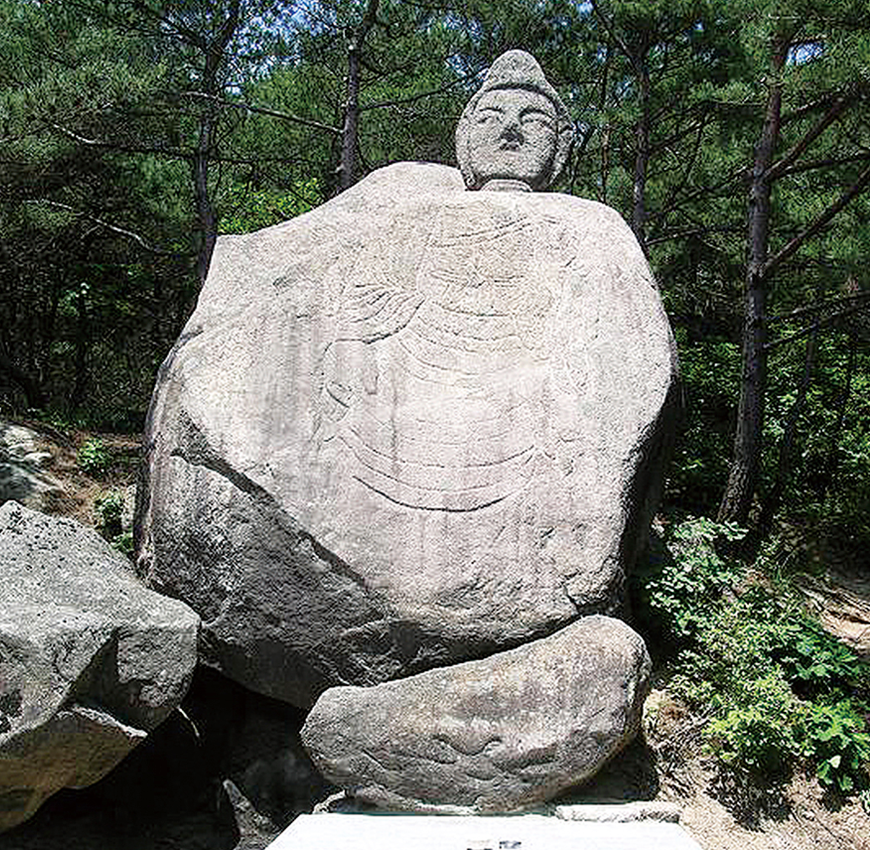Rock-carved Buddha in Dongsong-eup

DETAIL VIEW
This stone Buddha and remains and relics for a three-story pagoda and other structures of the temple are found around the place; however, there is no literature to refer to its origin or construction, and its exact historical date is unknown.
There are many temples and hermitages among and along the Geumhaksan mountain range such as Mt. Geumhaksan, Mt. Bogye, and Mt. Guryongju from Simwonsa temple, established in 547 AD including Sukdaeam (Sukdae hermitage), Jijang-am (Jijang hermitage), Namam (Nam hermitage), Anyangsa Temple, and Bokhaeam (Bokhae hermitage) from Silla to now.
Considering relics (three-story pagoda, two pagodas, roof stone, roof-end tile) found at that time on 1200m2 of flat space around Maaebulsang, it is estimated that was the site for a big shrine (in the early Goryeo Dynasty). The Maaebulsang’s gentle smile and hand holding ends of clothes spreading widely shows that the shape of sculpture is from the period of Silla. Its head is made of a different rock and is slightly tilted to the left . The total height is 3m, and the width is 2.5m; the height of head is 90m.
We still can find relics such as stone pagodas and sculptures, the site where a Taegojong female monk (Gyeyong Sohn) built a hermitage and meditated, and the traces of Buddhists’ prayers from many years. It was designated as the 33rd cultural material of Gangwondo on June 2, 1984.
LOCATION
Located on Mt.

